It's one of the last purely combustion and if it's to close, it's with a golden key: on the business card of the McLaren 765LT there are 765 hp, 2.8 s from 0 to 100 km/h and 330 km/h, plus Senna components to become incredibly effective on track.
After a very difficult 2020 (see box), one of the models that McLaren is counting on for the recovery (which is being very positive in China, starting now in the Middle East, while Europe and the USA remain in stand-by) is precisely this 765LT. It is the fifth of the modern era for the British brand, which pays tribute to the F1 with a long tail (Longtail), designed by Gordon Murray in 1997.
The essence of these LT versions is easy to explain: weight reduction, suspension modified to improve riding behavior, improved aerodynamics at the expense of a larger wing and an extended nose. A recipe that was respected almost two decades later, in 2015, with the 675LT Coupé and Spider, two years ago with the 600LT Coupé and Spider, and now with this 765LT, now in a “closed” version (in 2021 it will be revealed the convertible).
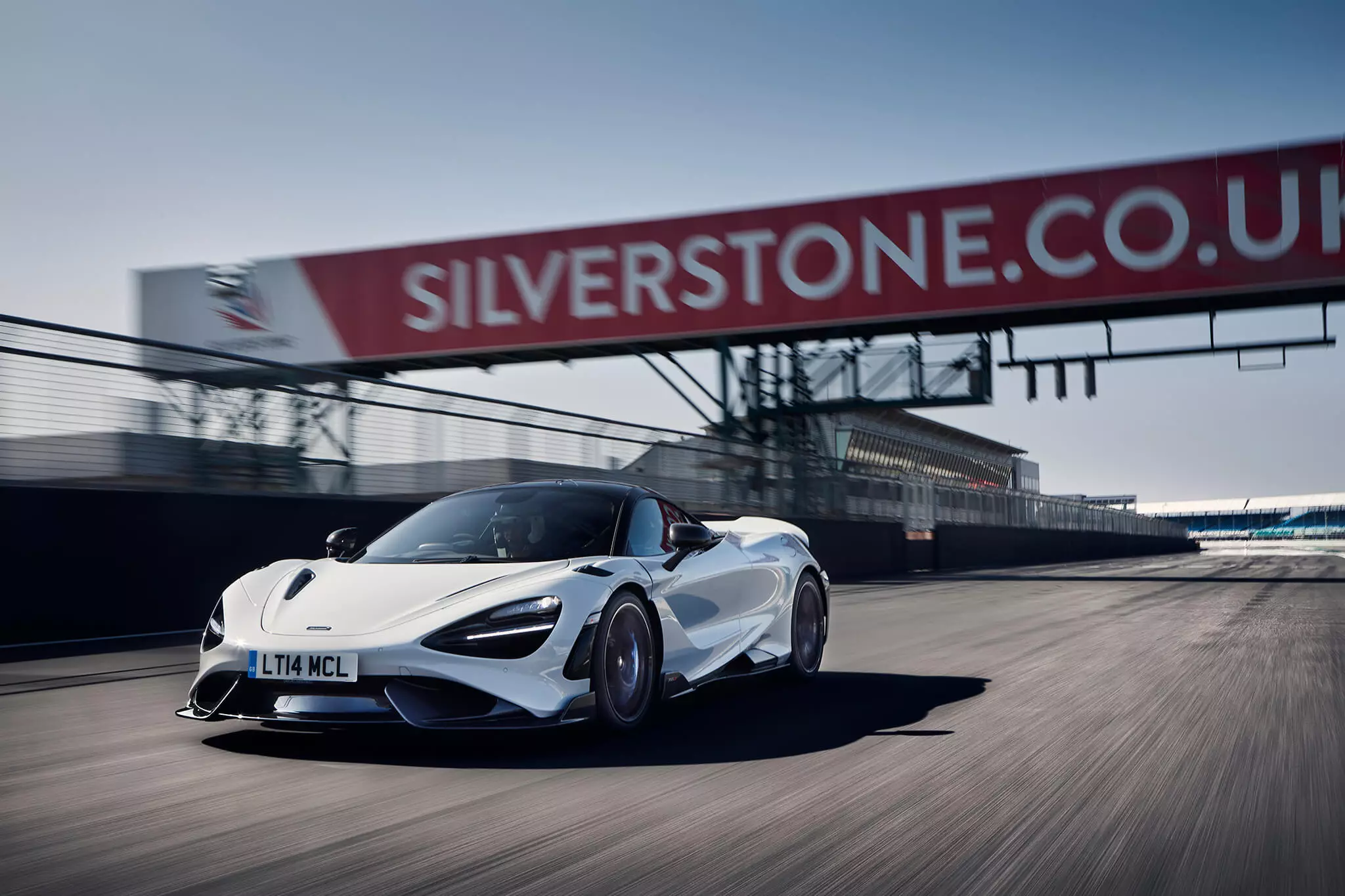
2020, "annus horribilis"
After registering in 2019 the best sales year in its short history as a manufacturer of road supersports, McLaren Automotive was heavily penalized in the pandemic year 2020, with no more than 2700 registrations globally (-35% compared to 2019), following commercially devastating months, like the ones he lived from March to May. The company was restructured on several levels, had to raise external financing ($200 million from a Middle Eastern bank), reduced the number of employees, mortgaged the Technical Center facilities and postponed the launch of the future model of the Ultimate Series range ( Senna, Speedtail and Elva) for the middle of the present decade.
What has changed?
Among the aspects that have progressed the most compared to the very competent 720S, there is the work done on aerodynamics and weight reduction, two proper names of any car with sports aspirations. In the first case, the front lip and rear spoiler are longer and, together with the carbon fiber floor of the car, the door blades and the larger diffuser, generate 25% higher aerodynamic pressure compared to the 720S .
The rear spoiler can be adjusted in three positions, the static position being 60mm higher than on the 720S which, in addition to increasing air pressure, helps to improve engine cooling, as well as the “braking” functionality. by the effect of the air” reduces the tendency for the car to “snooze” in situations of very heavy braking.
Being built on the base of the 720S, the 765LT is also equipped with Proactive Chassis Control (which uses interconnected hydraulic shock absorbers at each end of the car, without stabilizer bars) that uses 12 additional sensors (including an accelerometer on each wheel and two damper pressure sensors).

Living up to the LongTail designation, the rear spoiler has been extended
In the mission to throw as many pounds as possible “overboard”, McLaren engineers didn't leave a single piece out of their scrutiny.
Andreas Bareis, director of McLaren's Super Series model line, explains to me that “there are more carbon fiber components in the bodywork (front lip, front bumper, front floor, side skirts, rear bumper, rear diffuser and rear spoiler which is longer), in the central tunnel, in the floor of the car (exposed) and in the competition seats; titanium exhaust system (-3.8 kg or 40% lighter than steel), F1 imported materials applied to the transmission, Alcantara interior lining, Pirelli Trofeo R wheels and tires are even lighter ( -22 kg) and polycarbonate glazed surfaces like in many race cars (0.8 mm thinner)… and we also forgo radio (-1.5 kg) and air conditioning (-10 kg)”.
In the end, 80 kg were eliminated, with the 765LT's dry weight being just 1229 kg, or 50 kg less than its lighter direct rival, the Ferrari 488 Pista.
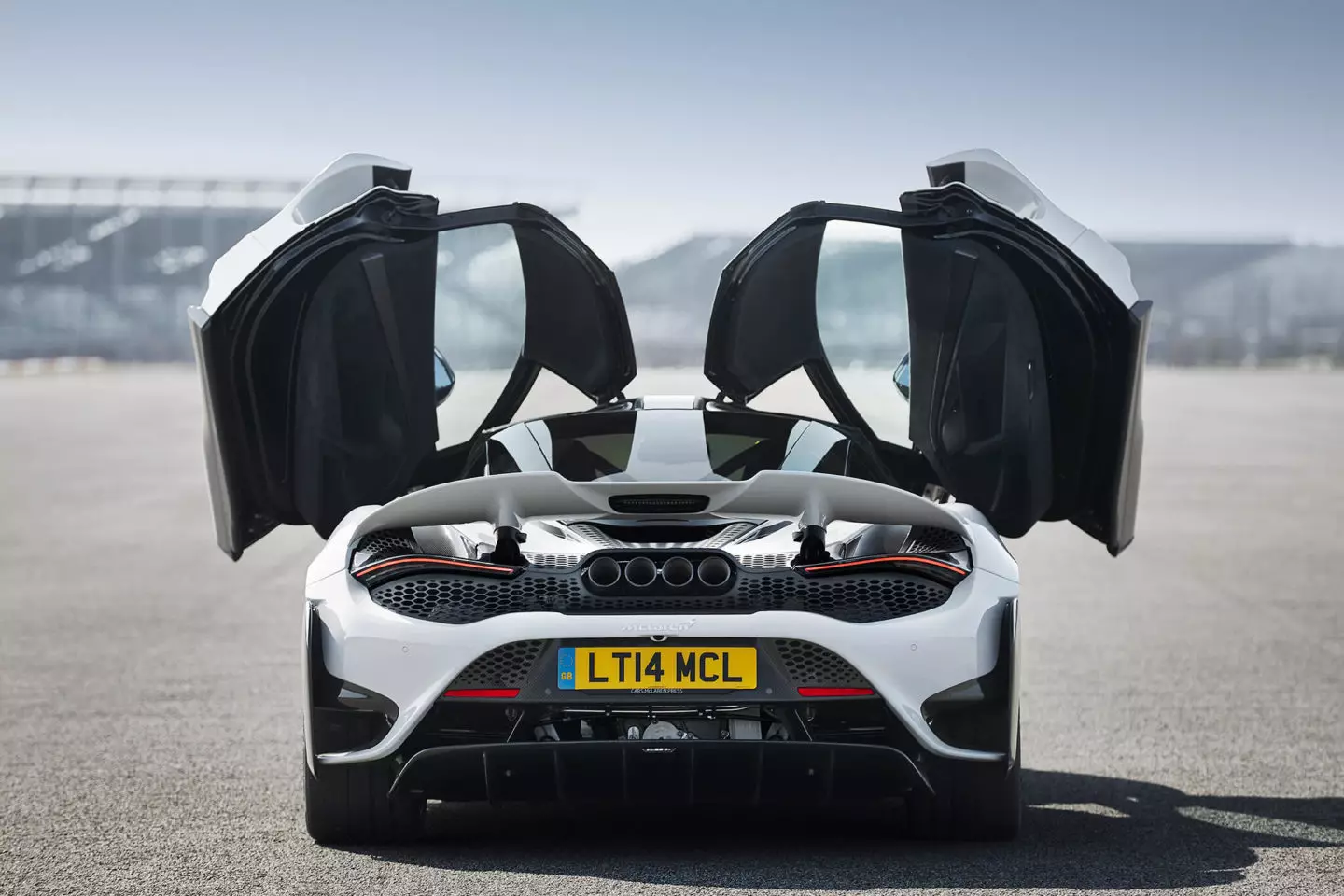
Behind the cockpit and carbon fiber monocoque is the benchmark 4.0 l twin-turbo V8 engine (with uprights five times stiffer than on the 720S) which has received some of Senna's teachings and components to achieve a maximum output of 765 hp and 800 Nm (the 720S has minus 45 CV and minus 30 Nm and the 675LT minus 90 CV and 100 Nm).
With regards from Senna
Some technical solutions are noteworthy, even for having been “given” by the sensational Senna, as Bareis explains: “we went to get the McLaren Senna's forged aluminum pistons, we achieved a lower exhaust back-pressure to increase power at the top of the regime speeds and we optimized the acceleration in intermediate speeds by 15%”.
The 765LT's ceramic discs are also fitted with brake calipers “given” by McLaren Senna and a caliper cooling technology that derives directly from the F1, with fundamental contributions for requiring less than 110 m to come to a complete stop from a speed of 200 km/h.
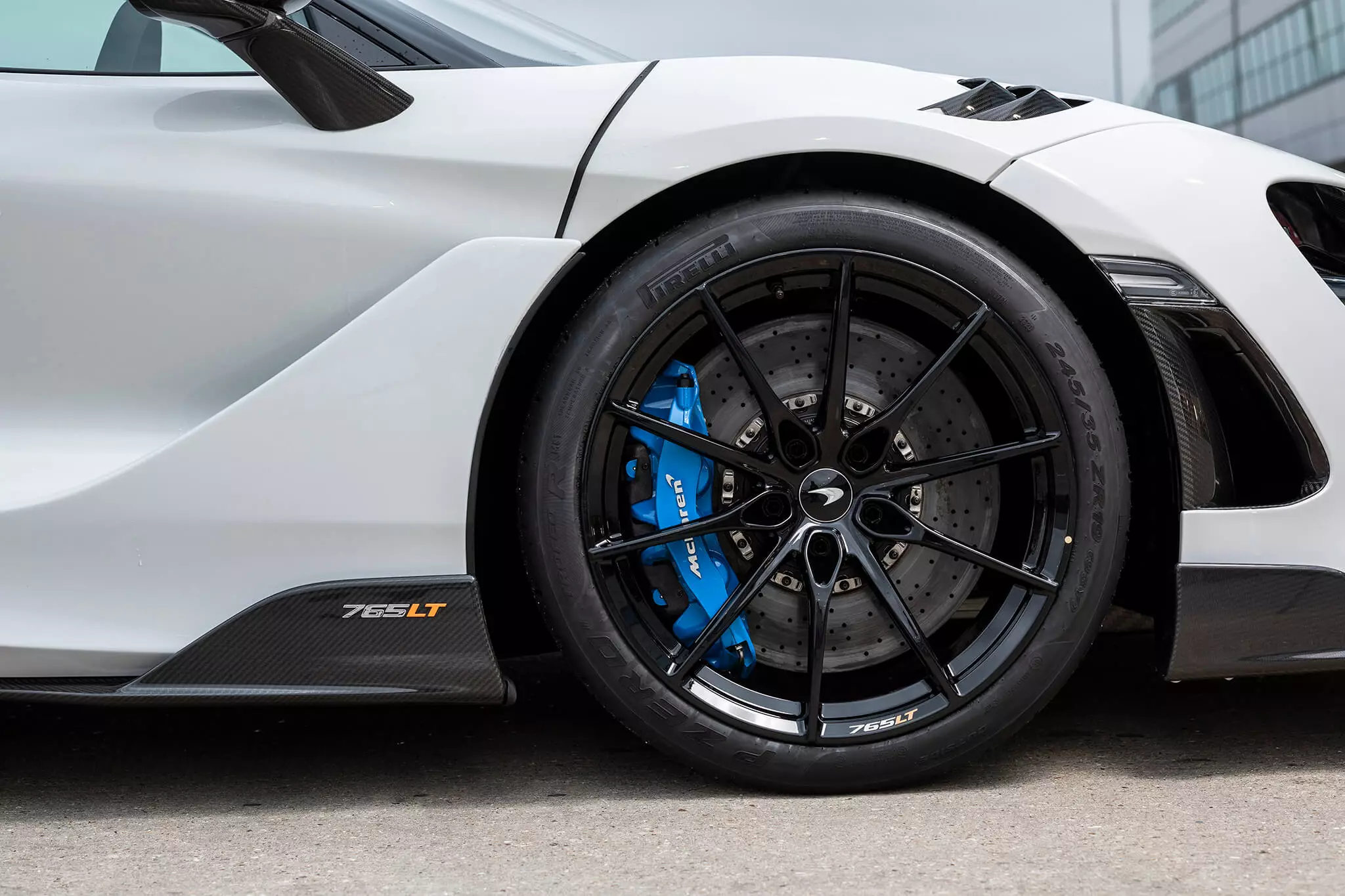
In the chassis, improvements were also introduced, in the steering with hydraulic assistance, but more important in the axles and suspension. Ground height was reduced by 5 mm, the front track grew by 6 mm and the springs are lighter and reinforced, which resulted in more stability and better grip, according to Bareis: “by leaning the car forward and giving it more width in this area, we increase the mechanical grip”.
Subscribe to our newsletter
Another visual indicator of the enormous value of the contents of this McLaren 765LT are the four dramatically joined titanium tailpipes ready to unleash a soundtrack that leaves anyone feeling in its tracks.
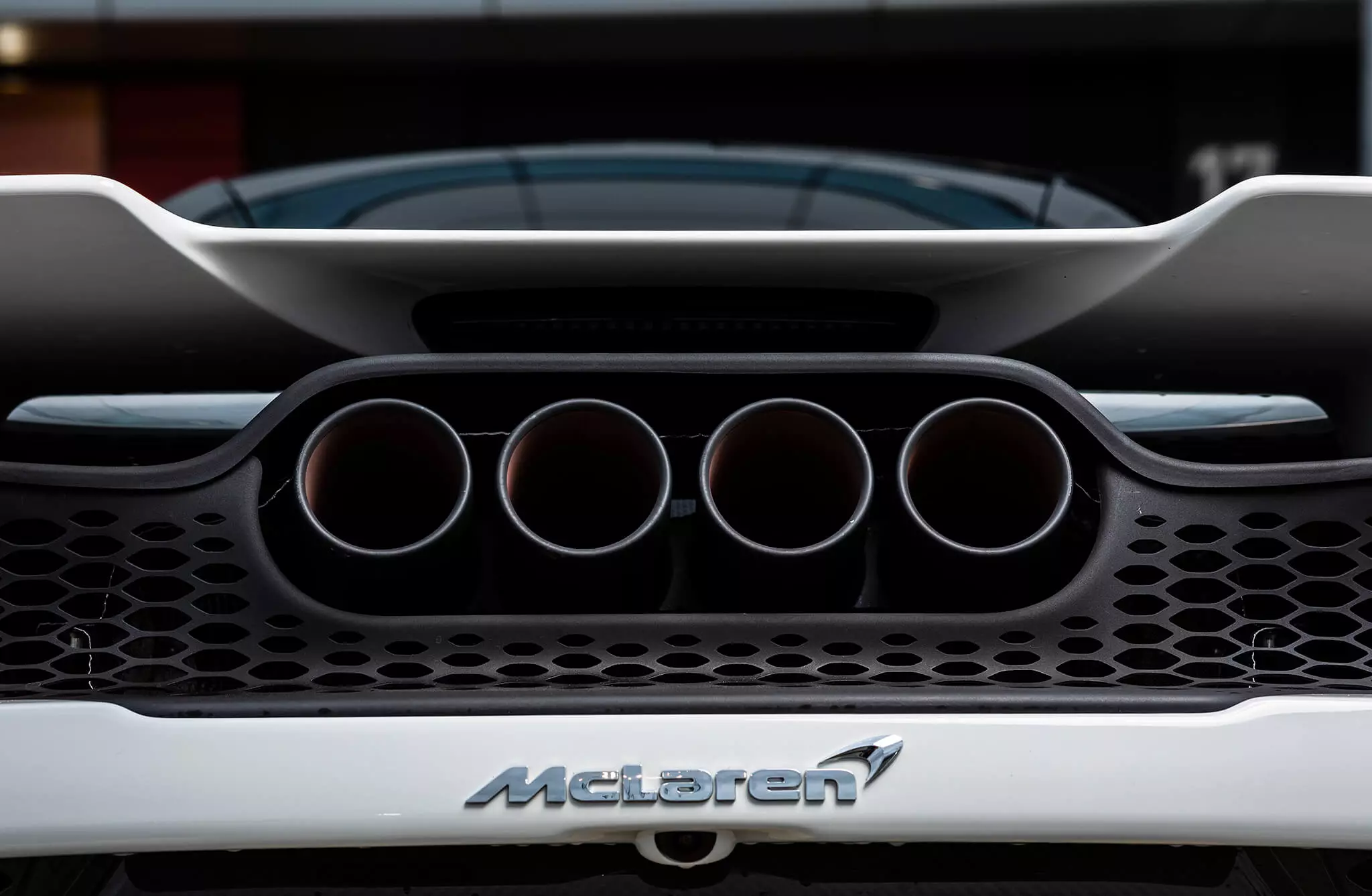
In Silverstone… what better scenario?
A glance at the technical sheet helped to intensify some anxiety before entering the Silverstone circuit, another element adding solemnity to this experience behind the wheel of the new McLaren: 0 to 100 km/h in 2.8 s, 0 to 200 km /h at 7.0 and a top speed of 330 km/h, numbers only possible with the agreement of the weight/power ratio of 1.6 kg/hp.
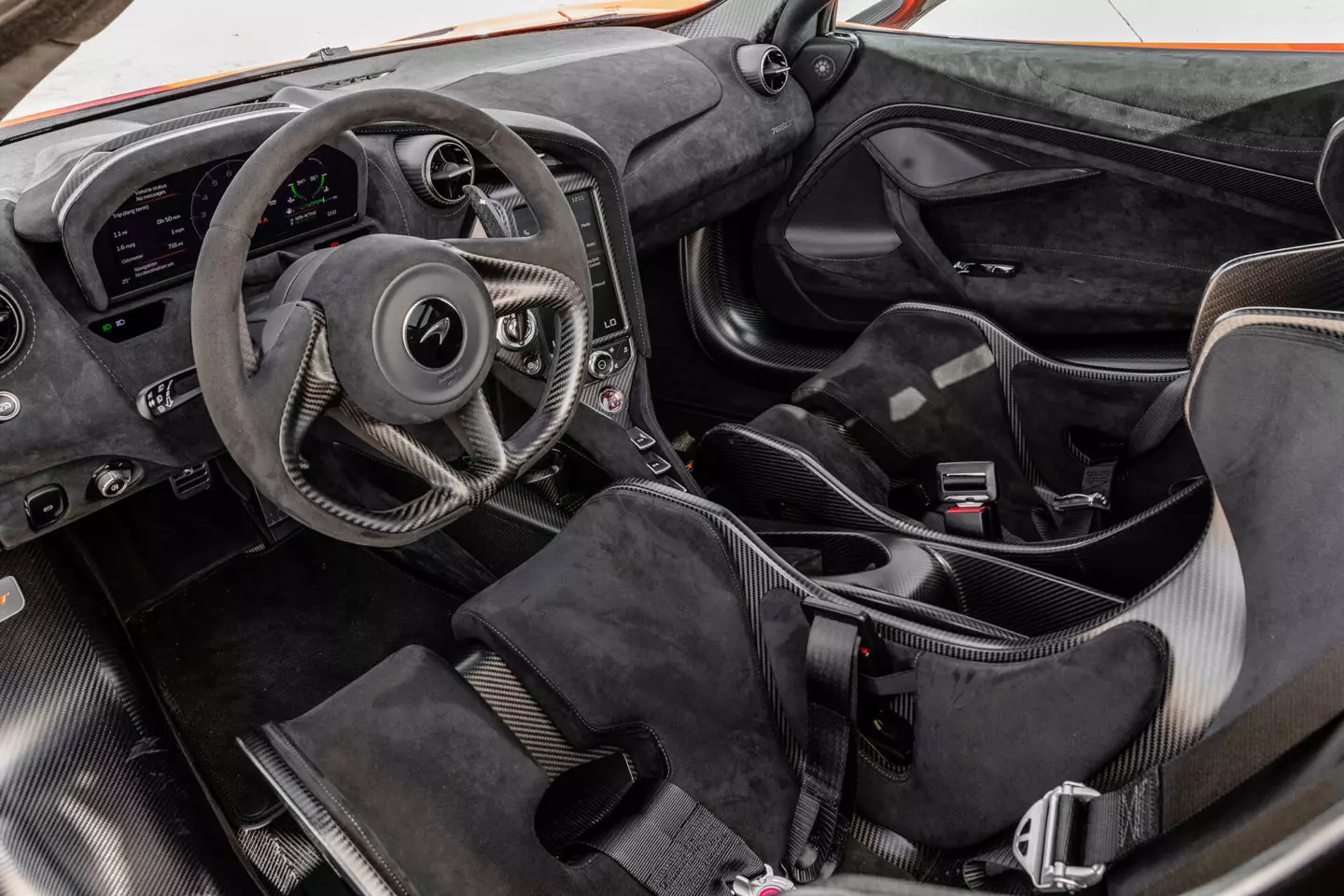
The competitive scenario confirms the excellence of these records and if the almost blink of an eye that lasts the sprint up to 100 km/h is equivalent to what the Ferrari 488 Pista, the Lamborghini Aventador SVJ and the Porsche 911 GT2 RS achieve, already at 200 km /h are reached 0.6s, 1.6s and 1.3s before, respectively, this trio of respected rivals.
Given the limitation of movement caused by the harness, I realize, when I fit into the baquet, the great usefulness of raising the center console and also the tape attached to the door, so that it is possible to close it almost without moving the body. At the center of the minimalist dashboard there can be an 8” monitor (I'd like it to be more inclined towards the driver, because any tenth of a second you'll gain to keep your eyes on the track is welcome…) that lets you control the infotainment functions.
On the left, the operating area with rotary controls for selecting Normal/Sport/Track modes for Behavior (Handling, where stability control is also switched off) and Motorization (Powertrain) and, between the seats, the button to activate Launch mode.
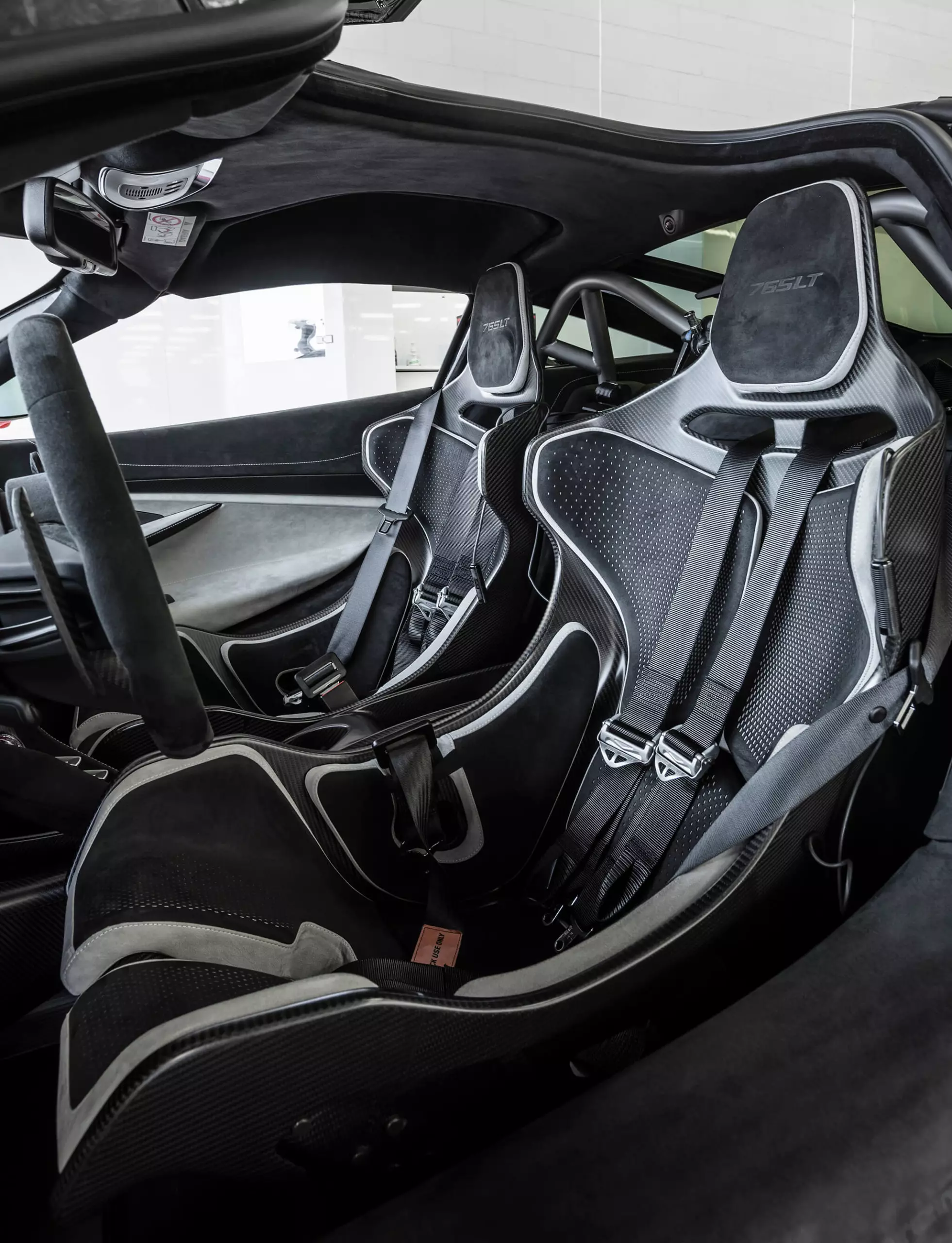
Lights…camera…action!
Between the thumb and the other four fingers (protected by gloves) in each hand I have a steering wheel without buttons on the face! Which only serves for what was originally created: turning the wheels (it also has a horn in the center…). The gearshift levers (in carbon fiber) are mounted behind the steering wheel, instrumentation with two dials flanking the large central tachometer (it is possible to vary the presentation). On track it's even more information, which is why all you have to do is touch a button to make the instrument panel disappear, which becomes a first track with residual information.
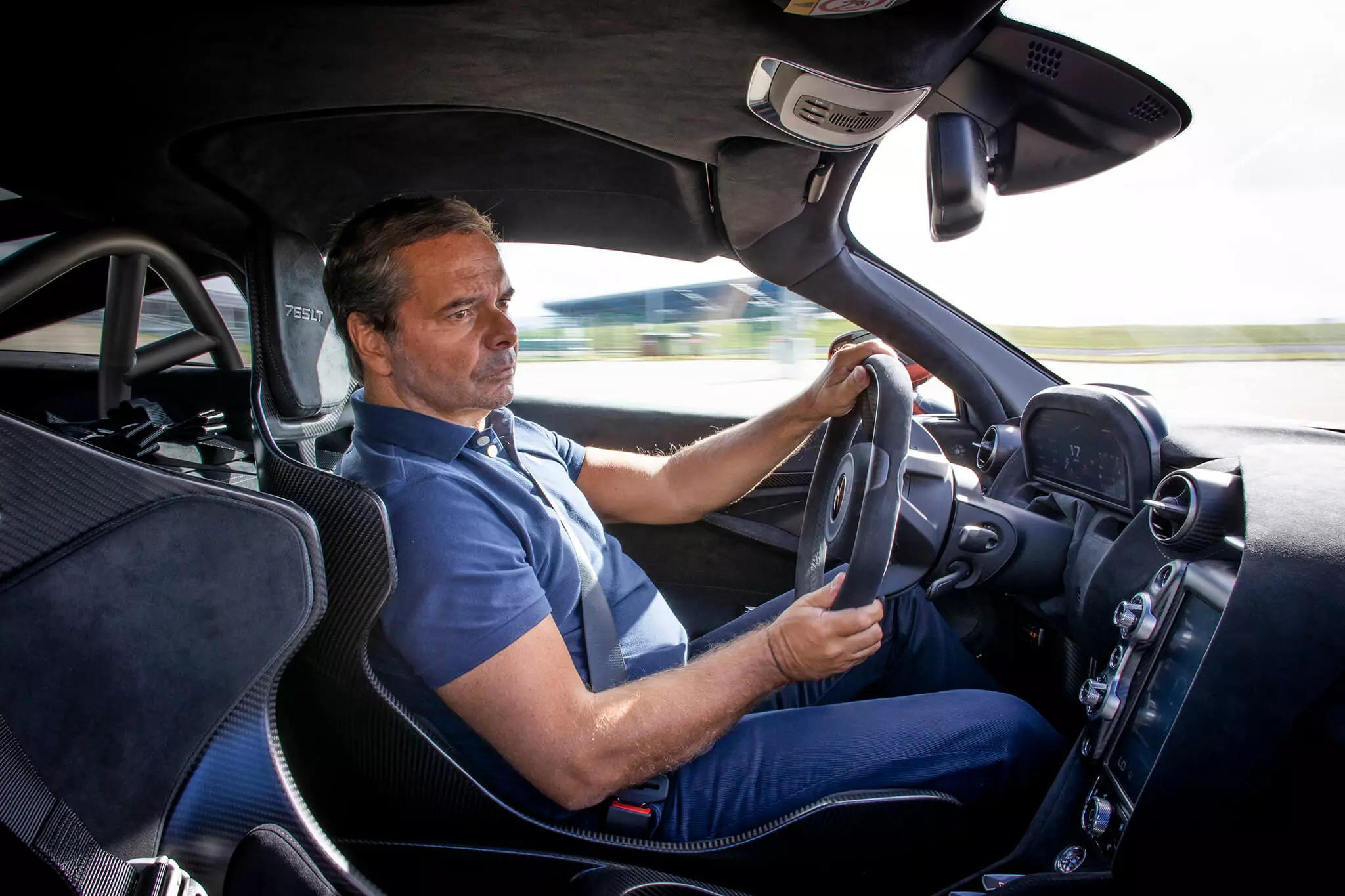
The engine doesn't have the acoustic cache of some Lamborghini, for example, and its flat crankshaft makes the sound a little more metallic and with less “charisma”, which may displease some potential owners.
More unanimous is the quality of performance, even though the focus was left on the quality of behavior and not so much on pure performance. Perhaps because the 800 Nm of maximum torque is gradually entrusted to the driver (the total is at your command at 5500 rpm), acceleration never feels like a punch in the stomach, but always like a continuous push, somewhat similar to a very powerful atmospheric engine.
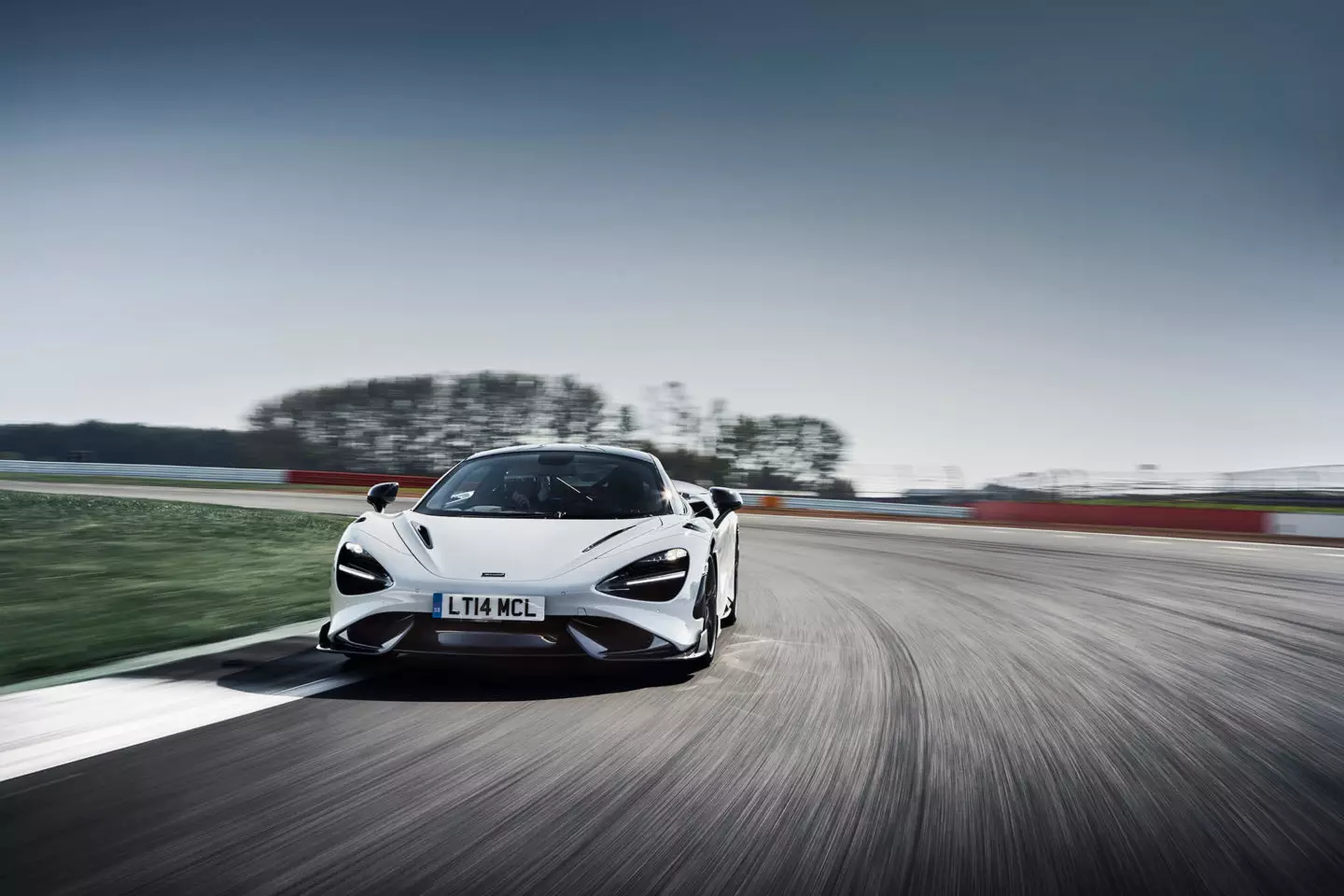
The braking power generates sensations only within the reach of a very efficient and competent semi “race car”, even in urgent need of speed reduction. From 300 to 100 km/h, while the devil rubs his eye, the car remains planted, almost undisturbed and with the steering completely free to define the curve trajectory with the driver/driver almost standing on the left pedal .
In faster corners you can feel the transfer of mass to the outside of the corner, as in Woodcote, before entering the finish line, where you have to be patient until you can step on the accelerator fully again.
Then, in tighter turns, like Stowe at the end of the Hangar straight, you can see that the 765LT doesn't mind wagging its tail in a sign of canine happiness if provoked to do so. And that requires some attention and steady hands to get right again, with electronic aids being important, at least until we understand how to "tame the beast" (you can keep making electronic aids more permissive or even absent, as we accumulate turns and knowledge of the route and the car invites).
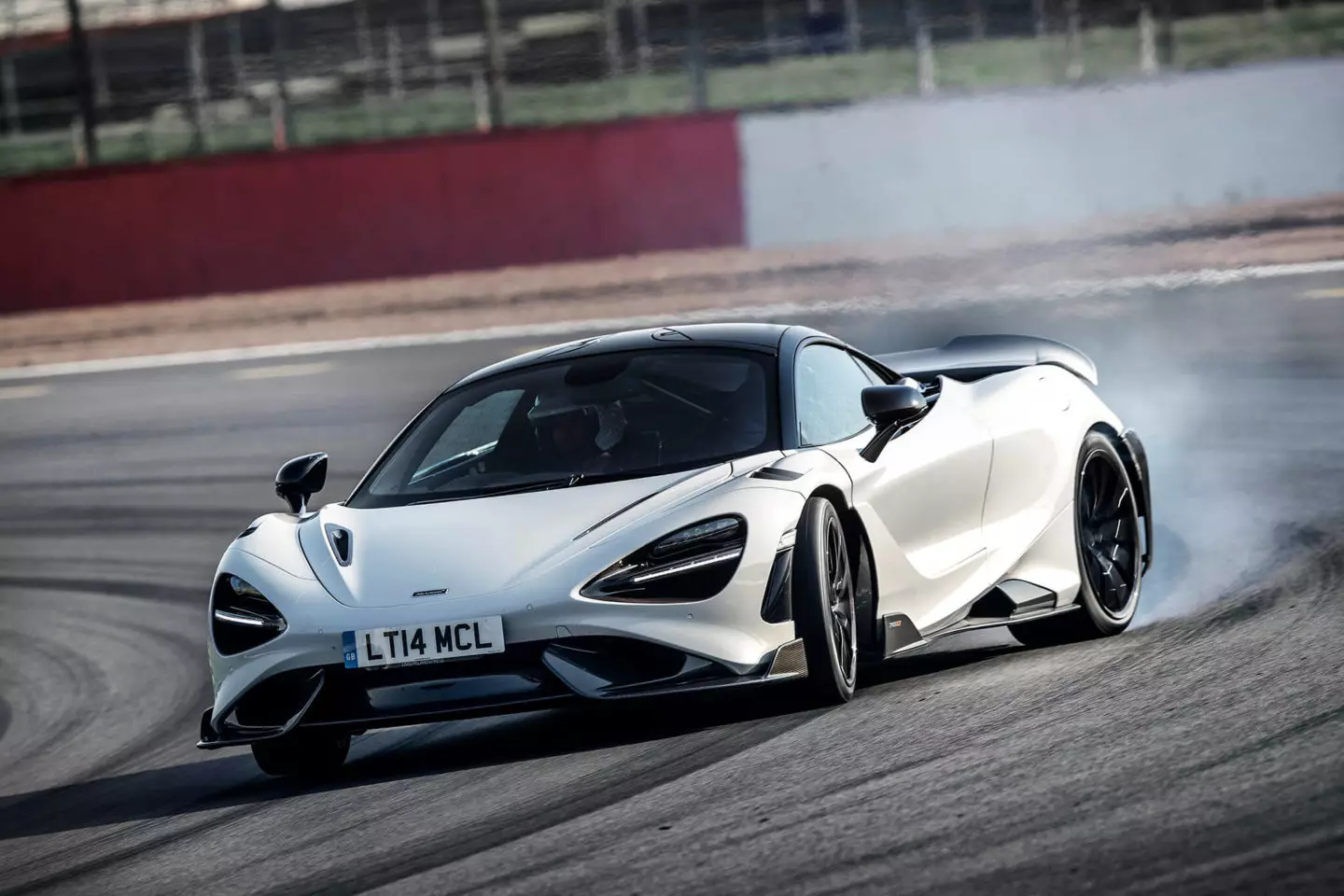
The standard tires, Pirelli Trofeo R, help keep the car glued to the asphalt like a limpet, but those who don't really intend to hit the track and buy a 765LT as a collection car for less frantic rides on civil asphalts may prefer the P Zero options . After all, this is not a Senna, a race car that is granted permission to travel episodically on public roads.
Technical specifications
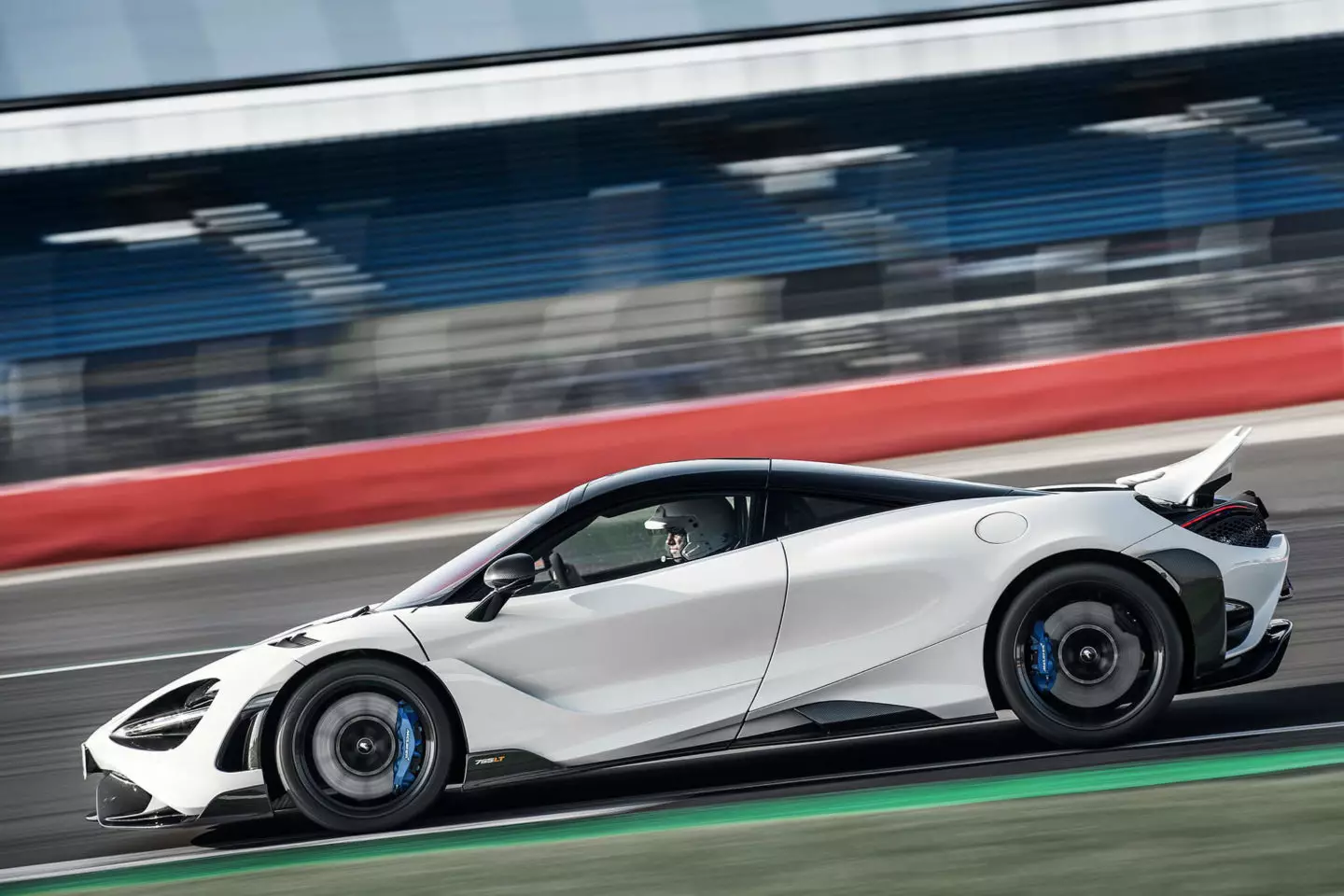
| McLaren 765LT | |
|---|---|
| MOTOR | |
| Architecture | 8 cylinders in V |
| Positioning | Rear Longitudinal Center |
| Capacity | 3994 cm3 |
| Distribution | 2xDOHC, 4 valves/cylinder, 32 valves |
| Food | Injury indirect, 2 turbos, intercooler |
| power | 765 hp at 7500 rpm |
| Binary | 800 Nm at 5500 rpm |
| STREAMING | |
| Traction | back |
| Gear box | Automatic (double clutch) 7 speed. |
| CHASSIS | |
| Suspension | Adaptive hydraulic damping (Proactive Chassis Control II); FR: Double overlapping triangles; TR: Double overlapping triangles |
| brakes | FR: Carbon-ceramic ventilated discs; TR: carbon-ceramic ventilated discs |
| DIMENSIONS AND CAPACITIES | |
| Comp. x Width x Alt. | 4600mm x 1930mm x 1193mm |
| Between axles | 2670 mm |
| trunk | FR: 150 l; TR: 210 l |
| Deposit | 72 l |
| Weight | 1229 kg (dry); 1414 kg (US) |
| Wheels | FR: 245/35 R19; TR: 305/30 R20 |
| BENEFITS, CONSUMPTION, EMISSIONS | |
| Maximum speed | 330 km/h |
| 0-100 km/h | 2.8s |
| 0-200 km/h | 7.0s |
| 0-400 m | 9.9s |
| 100-0 km/h | 29.5 m |
| 200-0 km/h | 108 m |
| combined cycle consumption | 12.3 l/100 km |
| Combined cycle CO2 emissions | 280 g/km |
Note: The price of 420,000 euros is an estimate.
